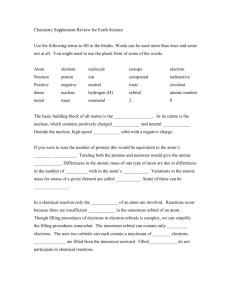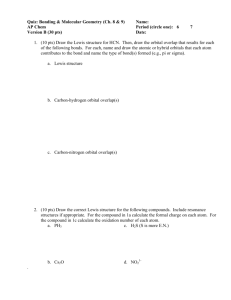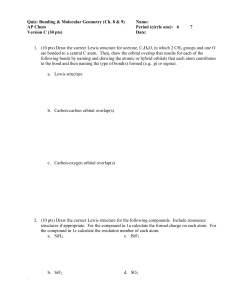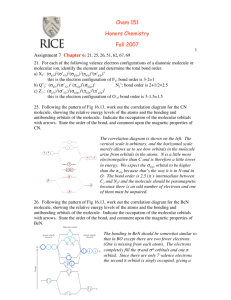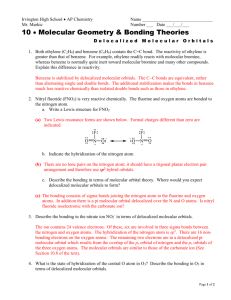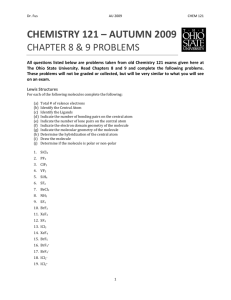Partial Charges and Bond Orders
advertisement
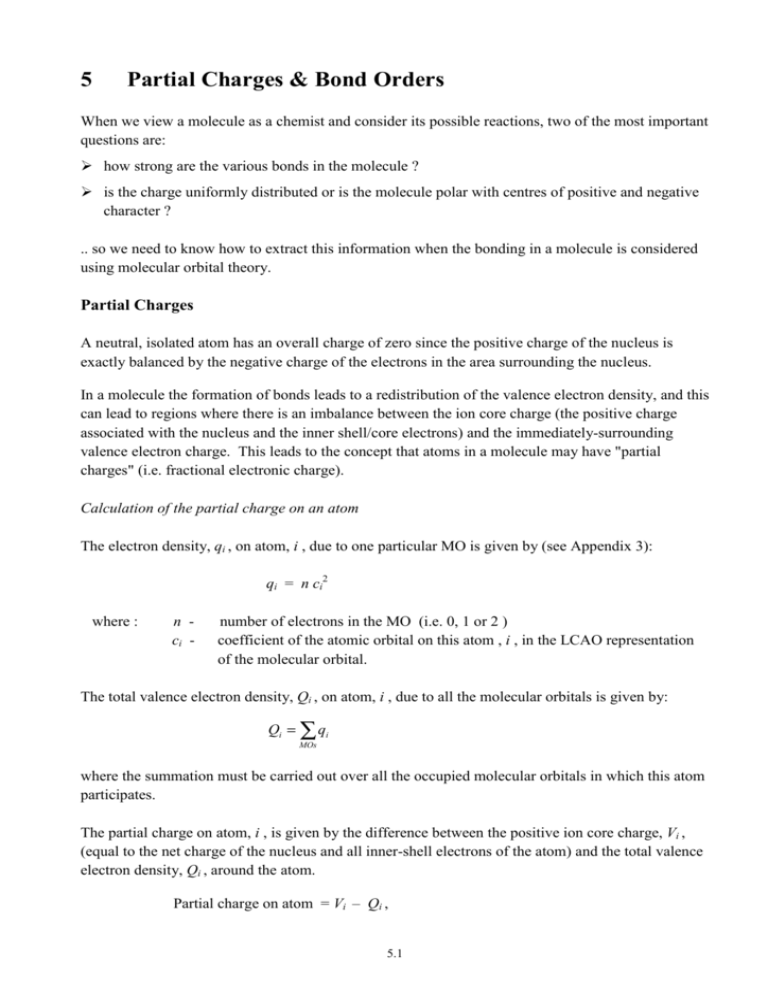
5 Partial Charges & Bond Orders When we view a molecule as a chemist and consider its possible reactions, two of the most important questions are: ¾ how strong are the various bonds in the molecule ? ¾ is the charge uniformly distributed or is the molecule polar with centres of positive and negative character ? .. so we need to know how to extract this information when the bonding in a molecule is considered using molecular orbital theory. Partial Charges A neutral, isolated atom has an overall charge of zero since the positive charge of the nucleus is exactly balanced by the negative charge of the electrons in the area surrounding the nucleus. In a molecule the formation of bonds leads to a redistribution of the valence electron density, and this can lead to regions where there is an imbalance between the ion core charge (the positive charge associated with the nucleus and the inner shell/core electrons) and the immediately-surrounding valence electron charge. This leads to the concept that atoms in a molecule may have "partial charges" (i.e. fractional electronic charge). Calculation of the partial charge on an atom The electron density, qi , on atom, i , due to one particular MO is given by (see Appendix 3): qi = n ci2 where : n ci - number of electrons in the MO (i.e. 0, 1 or 2 ) coefficient of the atomic orbital on this atom , i , in the LCAO representation of the molecular orbital. The total valence electron density, Qi , on atom, i , due to all the molecular orbitals is given by: Qi = ∑ qi MOs where the summation must be carried out over all the occupied molecular orbitals in which this atom participates. The partial charge on atom, i , is given by the difference between the positive ion core charge, Vi , (equal to the net charge of the nucleus and all inner-shell electrons of the atom) and the total valence electron density, Qi , around the atom. Partial charge on atom = Vi – Qi , 5.1 < Lecture - examples C2H4 , HCHO > Bond Orders In simplistic considerations of bonding in molecules the bond order between two atoms can be calculated using the equation: Bond Order = No. of pairs of electrons in bonding MOs – No. of pairs of electrons in antibonding MOs This approach works perfectly well for homonuclear diatomic molecules but to calculate bond orders in heteronuclear diatomic molecules and in polyatomic molecules, where the molecular orbitals span several atoms, we need a more sophisticated approach, as outlined below. The bond order between two atoms, i and j , due to one particular MO is given by (see Appendix 3): pij = n ci cj where : n = number of electrons in the MO (i.e. 0, 1 or 2 ) ci = coefficient of the atomic orbital on atom , i , in the molecular orbital. cj = coefficient of the atomic orbital on atom , j , in the molecular orbital. The total bond order between two atoms, i and j , due to all the molecular orbitals is given by: Pij = ∑ pij MOs where the summation must be carried out over all the occupied molecular orbitals which involve both the atoms. < Lecture - example HCHO > 5.2

